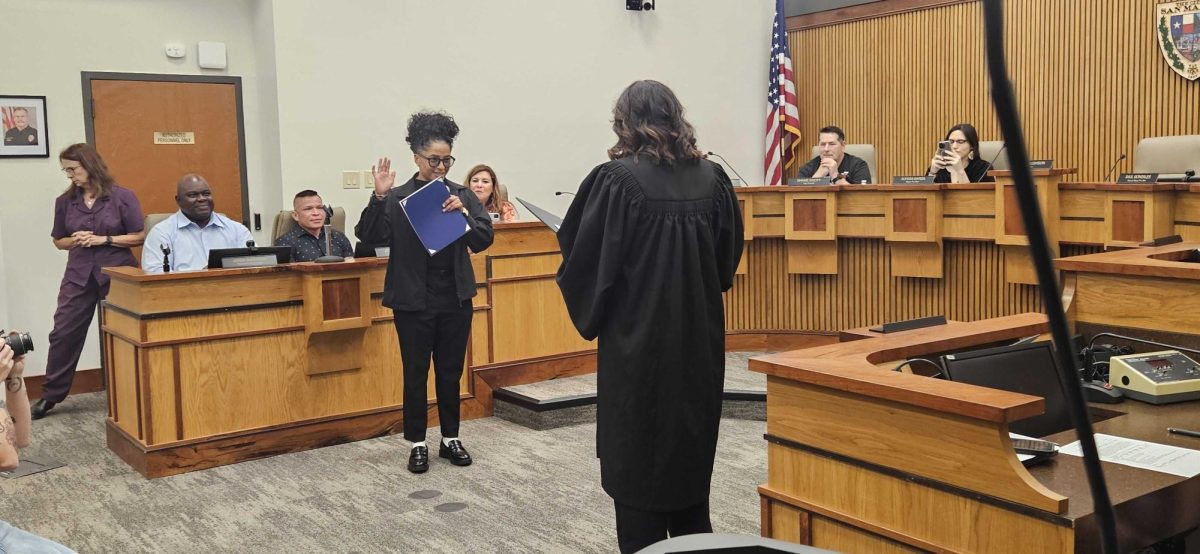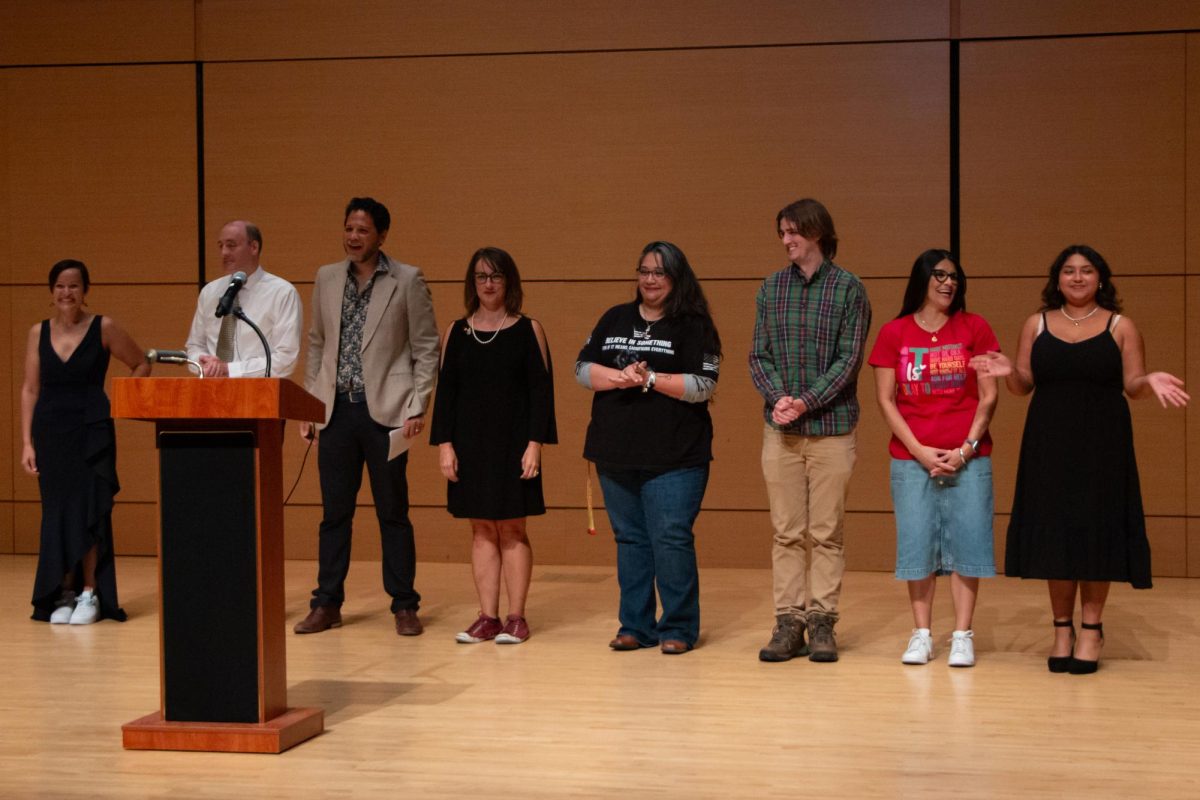The Wittliff Collections at Texas State reunited Director Severo Perez and two co-stars of the classic Chicano 1994 film “…and the earth did not swallow him” for its 30th anniversary on Sept. 19.
“…and the earth did not swallow him” is based on the famous 1971 autobiographical novel, “…y no se lo tragó la tierra”, by Tomás Rivera, Texas State alumnus. In the novel, Rivera shares the experiences and struggles of Mexican American farmworkers in the 1950s. Steven Davis, literary curator and book series editor for the Wittliff Collections, said the book is a story about an experience not often told or shared.
“[The novel]’s really like a post-modern novel because [Rivera’s] life as a migrant farmworker was so fragmented and fractured, [and] the novel reflects that…[through] a series of flashbacks and remembrances,” Davis said. “Nobody thought you could film a book like that, and this determined, very resolute Severo Perez [thought he could.]”
Davis first met Perez shortly after joining Texas State’s staff in 1994, and the two stayed in touch since. Davis’s first impression of Perez was his focused and highly artistic demeanor. During the event, Perez said it was difficult to watch the film for five years, and it took 30 years for him to view and appreciate the film.
Despite Perez’s criticisms on his work, “…and the earth did not swallow him” gained international critical acclaim and was nominated for the National Film Registry in 2023 by Congressman Joaquin Castro, according to the Wittliff Collections. Carlos Estrada, filmmaker and assistant professor, moderated the event.
“There’s not that many independent films that are highlighting both sides of [American and Mexican] culture, especially one that is made in the ’90s but takes place in the ’50s,” Estrada said. “You just don’t see 1950s period pieces about being a Mexican American immigrant… Being a Latino filmmaker whose parents immigrated to the States from Mexico, [I will] always have a personal connection to any sort of story like this.”
According to Davis, Perez vaguely heard about Rivera’s novel as the Chicano movement for civil rights erupted in the late 1960s and early 1970s. However, after meeting Rivera and being impressed by his warmth and demeanor, Perez found a copy of “…y no se lo tragó la tierra” and was inspired to create a film adaptation of the novel after relating to the story.
“[Rivera] was speaking the same language that I had heard,” Perez said during the event. “We knew the same folk tale…I saw the movie by the time I read the book, [and] I knew what movie I wanted to make.”
Rivera agreed to Perez’s proposition to turn his novel into a film, and it took twenty years of work until the film premiered in 1994. Between budget limitations and rainy days on set, the making of “…and the earth did not swallow him” was not easy. However, the film was a success and is still celebrated today.
“No work of art is easy to make,” Rose Portillo, “…and the earth did not swallow him” actor, said. “No work of art, regardless of the opportunities, it’s not easy. It’s a very hard road on all levels. It is so incredibly worth it.”
To learn more about director Severo Perez, read his biography on The Wittliff Collections website at https://www.thewittliffcollections.txst.edu/research/a-z/perez.html.




















